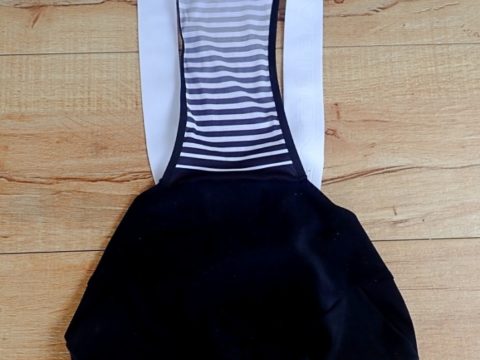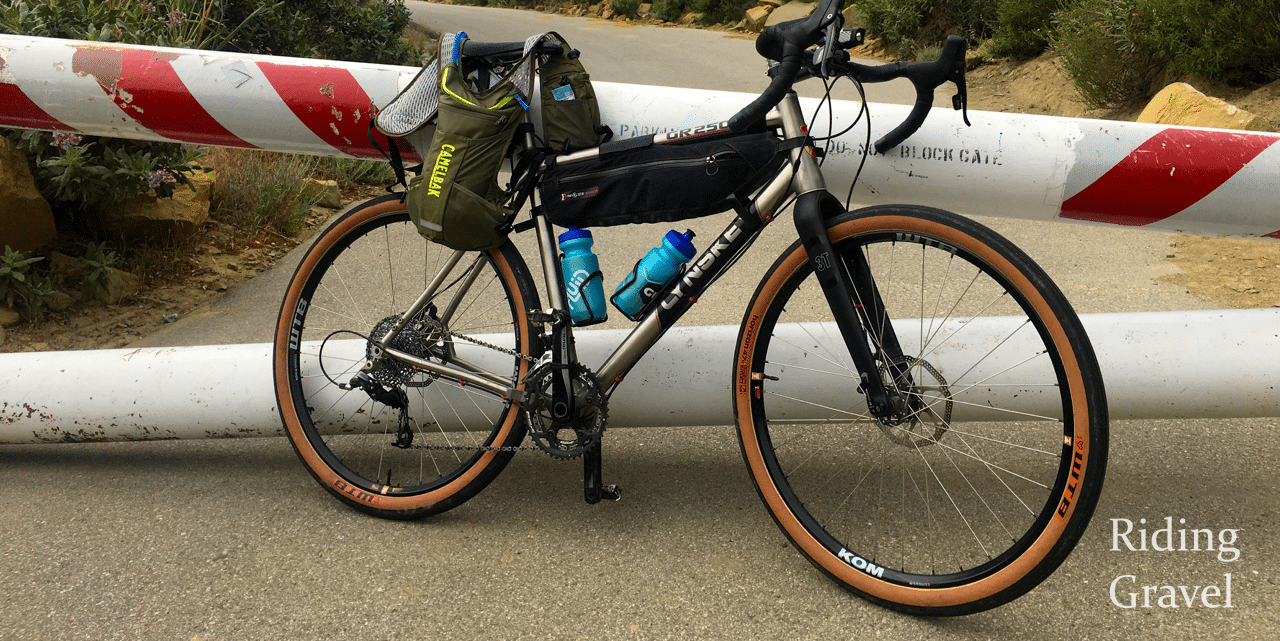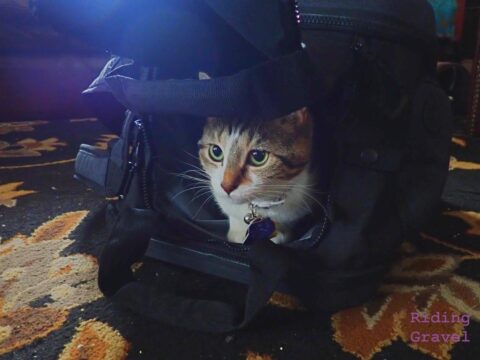
The Breezer RADAR Expert has been used in all sorts of ways here within the last month since my last update on this review. (Missed that? Go HERE) The time has come for this bike to head back to Breezer though, so this will be my final verdict on this versatile, steel drop bar adventure bike.

Getting Dirtier: As promised in my last update, the RADAR Expert was set up with 29 X 2.1″ Michelin Wildgripper tires and ridden on a bunch of single track. The bike took on a different feel with these fatter treads. The word “stability” was what I most often associated with the way the RADAR Expert handled single track. It was a lot of fun on single track, but it wasn’t a bike you’d be popping off berms with, or what anyone would say was “playful”. This bike’s personality was more of “enjoying the scenery” and doing it in such a way that you needn’t worry about what the bike was going to do.
The RADAR Expert likes its “feet on the ground” and it does a great job at it. When you have the inclination to, let’s say, hop a log, or pop the front end up over something, you might find it resists such movements. You certainly can find better mountain bikes for this sort of riding, but the RADAR Expert isn’t touting itself as a mountain bike either. If you are the sort of rider that finds “adventure” in just being out there, then the RADAR Expert is right up your alley. It will take you there, get you through, and back home again with little fanfare. Just don’t expect anything beyond the ordinary ride though.

At The Finish: The RADAR Expert is a reasonably priced bicycle with a lot of versatility on offer to its owner. While it is tempting to review such a bike on the merits of its “upgrade-ability”, I think it would be a big mistake to do that. One needs to look at something like this with a perspective that is realistic to its mission as a product- which, in my opinion, is to offer an alternative to unpaved riding at a reasonable outlay to the consumer with maximum “fun” potentials.
Seen in this way, the RADAR Expert delivers. It has the capabilities to take its owner from paved back roads, to gravel, to fire roads, and maybe even some light single track. It could be a commuter, a gravel grinder, or even a bike packing rig. There are braze-ons to accommodate most any desire in these areas. The component spec is mostly up to task. While I had issues in some very challenging conditions, it has to be said that any component group would have the same issues. I know, as I’ve both experienced that and seen it. That said, the 9 speed drive train shifts well enough, should last a good while, and is inexpensive to replace when it does wear out. Big kudos to Breezer for spec’ing those TRP hybrid hydraulic/cable brakes as they are fantastic stoppers for this class of bike at this price.
I could see this as a main bike to do a little of everything for a budget conscious or gravel-curious rider that can’t/won’t invest in a more expensive rig. It could be a great training bike for anyone needing a “mule” to drag through the Winter while saving the finer gear for better weather or races/events. It isn’t the most exciting handling bike, but it has stability and behaves in most situations which is what you want in a bike if you want to relax and take it all in.
Of course, at the price you pay for this bike, it isn’t going to be perfect. The steel tubing is so skinny that many bags have straps far too long for the frame. (See that foam under the top tube bag in the image above?) The frame seems a touch long for the sizing, but a stem swap should remedy that for most folks. This bike is a touch harsh. Probably due to some medium level components here in the seat post and cockpit. The welds on the frame are not the prettiest. All things which can be seen as being inconsequential when you are cruising a beautiful back road or blasting some buff single track on the way home from work, things this bike excels at.
So, I give the RADAR Expert a big thumbs up here. It is a value packed bike that brings “the fun” and it works just fine in the way you’d expect. It isn’t a high end machine, and it doesn’t pretend to be one. This is the bike you have adventures on and you don’t worry about the paint getting scratched or if it might get dinged. The kind of bike you pull out of the garage ten years down the road and see all the “character marks” you earned on memorable rides. The kind of stuff that makes you smile, remembering all the fun you had. And isn’t that why we ride these machines in the first place?
NOTE: Breezer Bikes sent the RADAR Expert over for test and review at no charge to RidingGravel.com. We were not paid, nor bribed for this review, and we always strive to give our honest thoughts and opinions throughout.










A this point in Gravelbike evolution, I believe that any Gravelbike that comes 700 wheels should have enough frame and fork clearance for at least 50mm/2.0 tires and 56mm/2.2 tires might be better. Needing a second 650 wheelset to use wider tires is stupid and a waste. There are now a wide array of gravel tires in the 40-56mm width range not including mountain tires. A Gravelbike that uses 40mm tires for daily rides but could use 50mm-56mm tires for bikepacking or more extreme off-road situations is not unreasonable. Therefore, I give the Radar a big thumbs up. I sure would like to see more high-end Gravelbikes come with tire clearance for wider tires. Besides, you can’t have to much mud clearance.
Yeah it would be good, but because of the 68mm BB shell and massive toe overlap for big tyres 650b is a better option on a gravel bike.
The Radar is living proof that a Gravelbike can have clearance for 29×2.2 tires. Let’s let go of the Roadie mentality so that our Gravelbikes can have more utility and versatility. I’ll choose the taller 700/29 wheels every time. Needing to have two wheelsets is a waste of money and resources.
457mm chainstays… It’s living proof of what you have to compromise to get that clearance. There is a reason why you don’t see that many gravel bikes with clearance like this.
No roadie mentality. I use my gravel bike everywhere. I like wide tyres. But I also hate toe overlap infinitely long chainstays.
You can’t escape reality.
Here are the wider tire (at least 29×2.2/700×56) gravel bikes that I found after a bit of searching Moots Baxter, Curve GMX, Salsa Cutthroat, Kona Sutra Ltd, Breezer Radar, Trek 920, Bombtrack Beyond 1, Salsa Fargo 29er, and of course, any XC hardtail. Yes, put a set of Gravel tires on an XC hardtail and it makes a pretty good Gravelbike. It can be done!
Pretty much all the bikes you listed use a 73mm BB shell, and/or super long chainstays and most of them will have horrible toe overlap.
No one said it can’t be done. Although you can’t escape toe overlap unless you make a drop bar MTB in terms of geometry.
It can be done with clever engineering which is usually not cheap. It can be done with a mile long chainstay which is a compromise, or it can be done with going to a wider BB shell. Wider BB shells are cool, but when it comes to crankset compatibility, it can be a bit of a pain in the butt. On 1x this is almost a non issue of course. But of course i’m sure you will have people complaining that the Q factor is too wide, and for some reason they want to run a road crankset with MTB tyres.
I mean no offense at all (seriously), but you don’t seem to understand exactly what it takes from a technical standpoint to fit big tyres. Do a bit of research if you’re interested in the topic.
I think at this point in the evolution of the gravel bike if it gets its design tweaked enough to properly run 29×2.2 tires, it is now a bikepacking bike.
Thanks for the review Ted. I’m curious if you think this bike would be good for doing something like Dirty Kanza, or if something like the Surly straggler or even a Long Haul Trucker would be a better choice?
Thanks!
@Scott- Thanks for reading and for your comments/questions.
Regarding those bikes, my opinion is that a touring bike (ala the Long Haul Trucker), is really meant to haul loads. The DK200 isn’t that venue. Secondly, the Straggler, which is an awesome bike, is kind of a different beast than the Breezer reviewed here.
My take is that the Breezer has a better rider position with regard to a longer, rougher course, such as the Dk200. It has those fork braze ons, and let me tell you from experience, you want a LOT of water for the DK200, even with the checkpoint support. The Breezer may not have the greatest drive train (upgrade-able, of course, but….) the brakes are fantastic on this bike and good brakes are a must for this event as well since you will have several high speed down hills and the ease of braking with the TRP HyRd brakes will be a big benefit come Mile 150 and beyond.
As I said in the review- The RADAR Expert isn’t a high end machine, but it would get the job done at the DK200 and I think it is the better bike for that task of the three you have mentioned. Would there be a better bike? Certainly. But at what price? Yes….. that matters too, and if you are on a budget, the RADAR Expert is definitely on the short list of bikes I would consider for a run at the DK200.